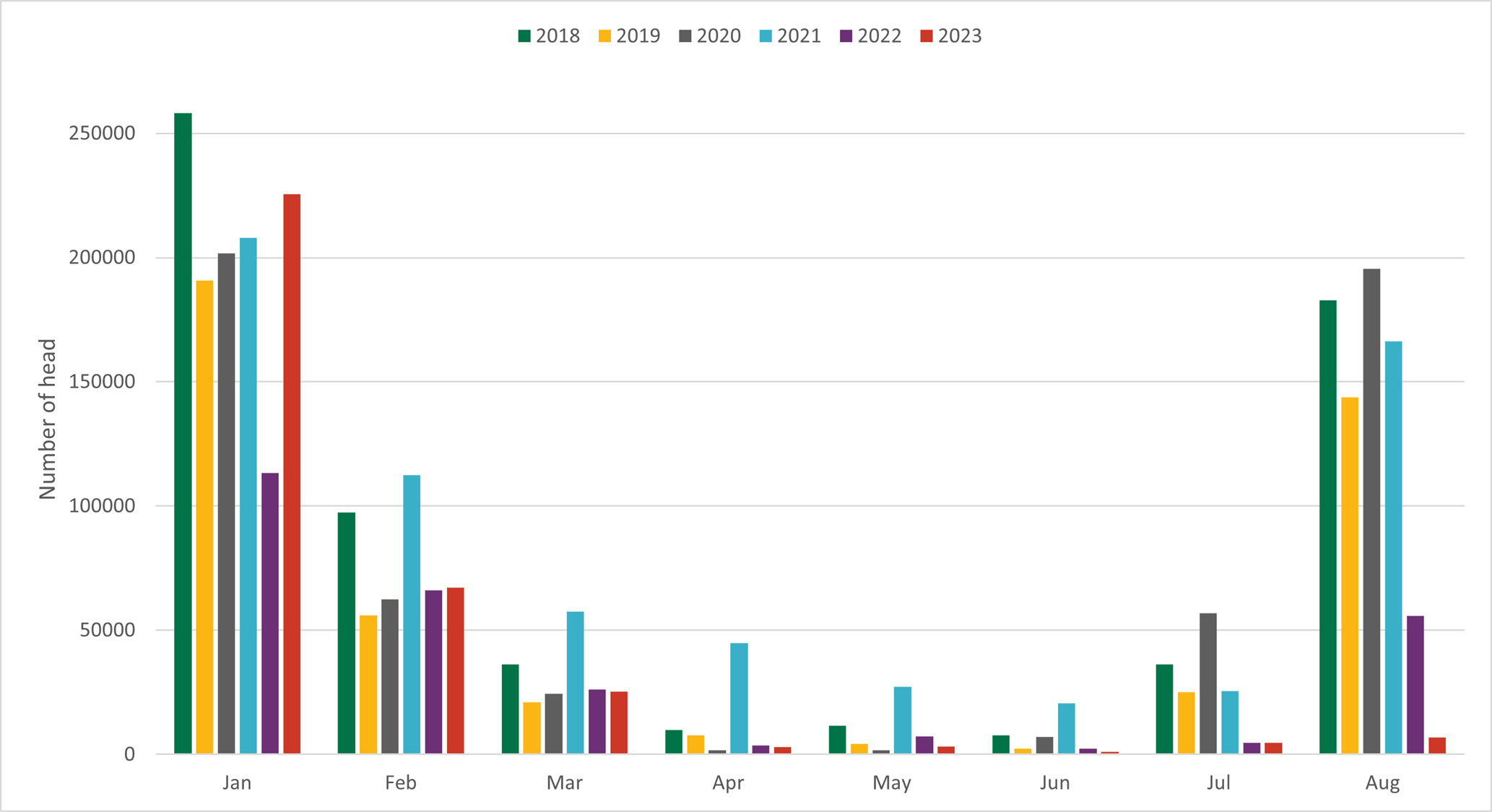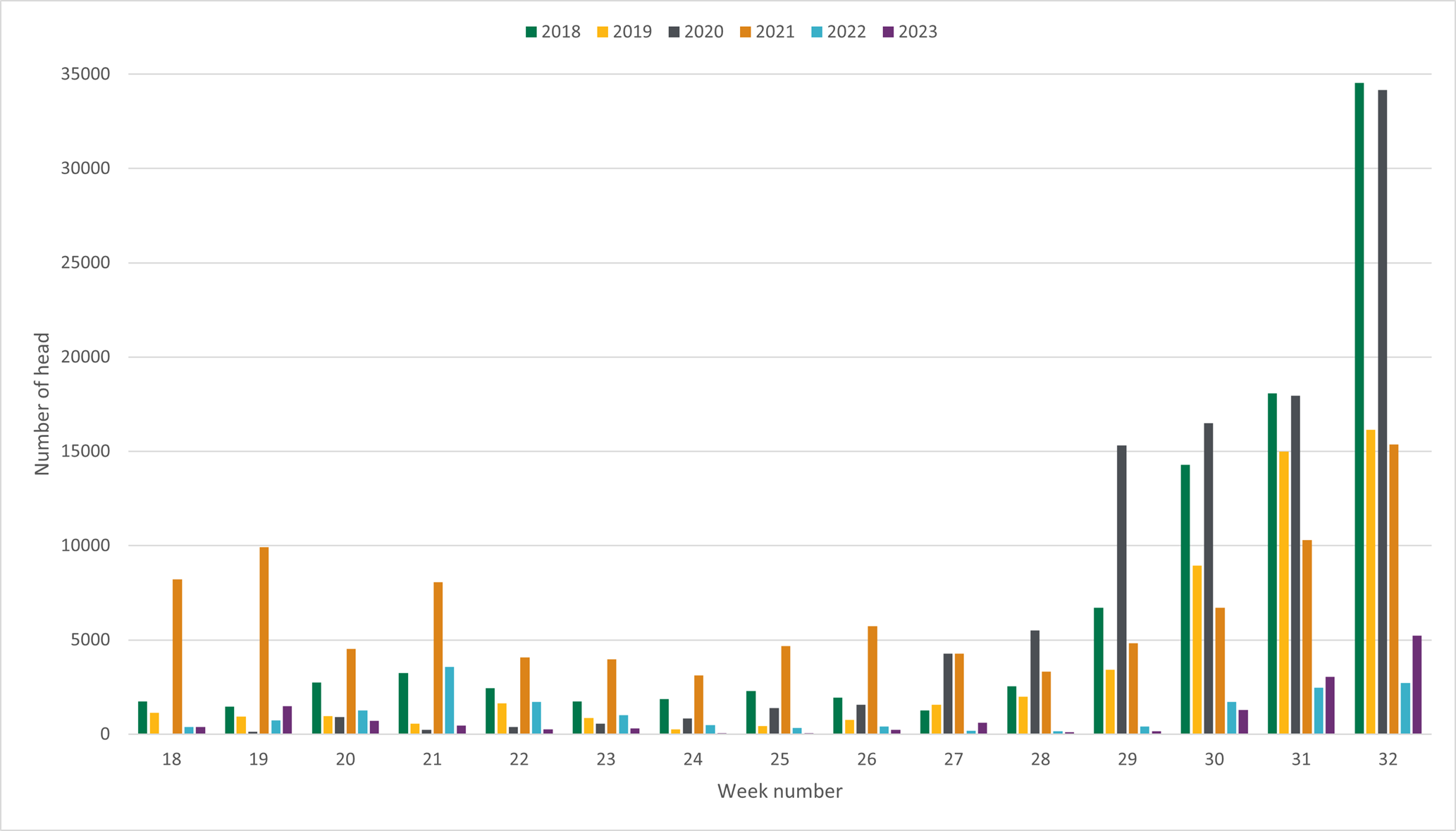Young lambs hitting the market
Key points
- Young lambs are late to the market this year compared to supply in the last five years.
- New season lambs are beginning to increase in numbers, but old season lambs have maintained volumes as producers try to clear stock.
- Supply is expected to increase rapidly as flock rebuilding from the past three years is increasing breeding numbers.
Young lamb or new season lamb supplies follow a seasonal trend with breeding cycles. Young lambs are generally less than five months old and from the most current season. Supplies tend to peak during the spring flush when lambs born in the current joining season are marked and brought to market. When joining occurs around March and April, the supply of young lambs reduces and by June there are hardly any available.
This year has been quite different. Young lamb supply from last season peaked in November, with favourable conditions in 2022 leading to good lambing rates. Joining this year was later than usual as producers assessed the market and weather conditions.

Figure 1: Young lamb monthly yardings
Total yardings between January and July are 32% higher than 2022 numbers due to the extensive carry-over of numbers from the previous season and the significantly higher yardings earlier in the year. Compared to 2021, yardings are 122% lower when intensive restocking was holding lambs on-farm for breeding.
When yardings are observed on a week-by-week basis, we can see the timing of lamb drops more clearly.

Figure 2: Weekly young lamb yardings
By week 27 or 28 young lamb numbers generally start to pick up with consistent supply by week 31. This year, we have not seen the uplift in numbers that we normally do. In week 28 of this year, just 99 young lambs were yarded. In the corresponding week of 2020, 5,500 young lambs were yarded. The difference further increases in week 29 where, in 2020 there were over 15,000 young lambs yarded but this year only 164.
Old season lamb yardings have remained relatively consistent as producers try to clear out stock because the next cohort comes along. Forbes typically sees some of the earlier showing of young lambs in the market and although numbers are beginning to increase with 4,150 this week, there are still large numbers of old season lambs being presented. These are coming through in mixed quality which is placing pricing pressure on a market that is being selective in their buying.
It is expected that new season lambs will be late to hit the market this year with delayed joining during the breeding season. The following weeks will reveal this trend as in previous years young lambs really ramp up at the end of July and into August. Numbers are beginning to increase with lambs trickling in in the last three weeks, but these numbers are far from what would be expected in a normal season at this time of year.
We expect supply of young lambs to be strong with the milder winter supporting lambing rates. There is still plenty of feed and soil moisture on-ground to support pasture growth, so flocks have been well stocked. Processors are buying out of the paddock and are less active in the saleyard.



